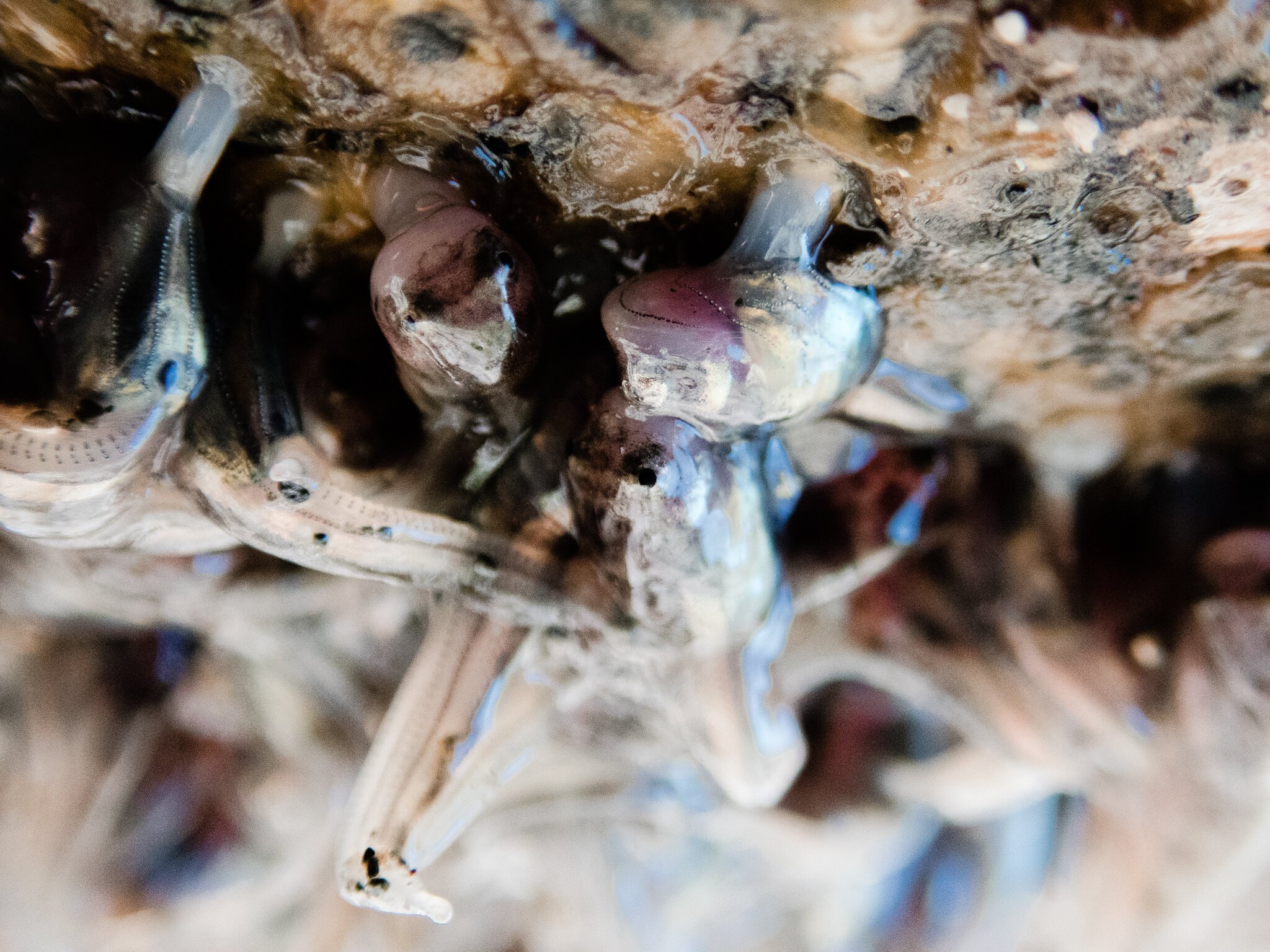Plainfin Midshipman
While most of their days are spent at 1200 feet below the surface of the sea, using the photophores on the underside of their body to simultaneously attract prey and confuse predators, for a few months out of the year the male Plainfin Midshipman makes the journey into the intertidal zone to attract females (utilizing a droning hum that’s loud enough to be heard by humans), encourages them to lay a clutch of eggs, and then spends the early summer mean-mugging beach-goers and protecting its young.
A Plainfin Midshipman on the shores of Puget Sound. (Photo: Sara Montour Lewis)
An extremely low tide on Puget Sound reveals the chosen nursery rock of the Plainfin Midshipman. (Photo: Sara Montour Lewis)
A view from above of the rock holding the Plainfin Midshipman nursery. (Photo: Sara Montour Lewis)
The tail of a Plainfin Midshipman sticking out of the underside of a rock at low tide. (Photo: Sara Montour Lewis)
A wide angle view of the Plainfin Midshipman revealed after the rock it was hiding under had been gently lifted. (Photo: Sara Montour Lewis)
A lifted rock reveals the nursery of the Plainfin Midshipman with recently hatched fry and the adult male fish tasked with protecting them. (Photo: Sara Montour Lewis)
Closeup detail of Plainfin Midshipman fry. (Photo: Sara Montour Lewis)
A closeup image of the recently hatched Plainfin Midshipman fry. (Photo: Sara Montour Lewis)
The Plainfin Midshipman fry, still attached to the underside of the rock, reveal the photophores on the underside of their body. (Photo: Sara Montour Lewis)
Young Plainfin Midshipman, recently hatched from the clutch of eggs. (Photo: Sara Montour Lewis)
A wide angle view of the habitat and nursery rock of the Plainfin Midshipman at low tide. (Photo: Sara Montour Lewis)











